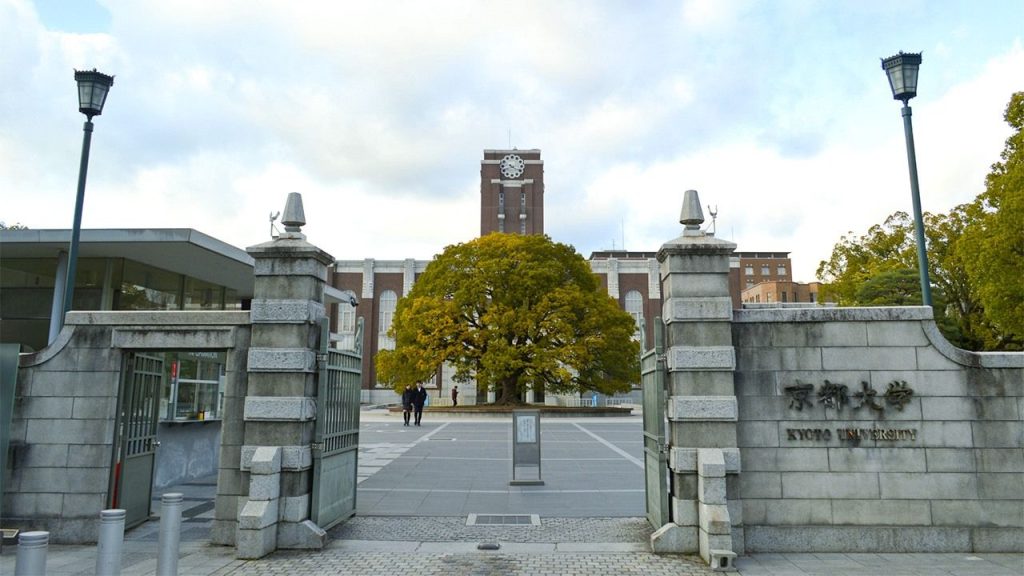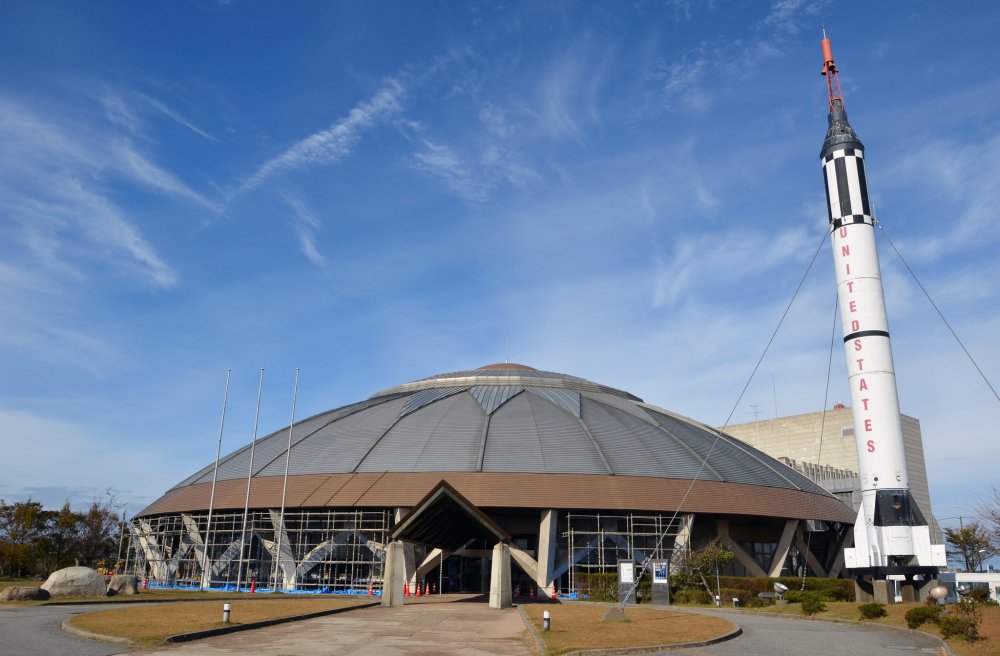The Blonde Interpreter – Part 2
My second opportunity to go to Japan came in the fourth year of my undergraduate studies. Unlike the term in Japan in the first year, spending a year in Japan between the third and fourth years of the Oxford course was optional. With enough exchange places lined up at Japanese universities for everyone in the year (there were only 7 of us, after all) it was an opportunity that we all jumped at. With the second highest grades in the year, I got second pick of the placements. Fortunately for me, the top student in the class had an inexplicable hankering to study in Kanazawa, leaving a place at Kyoto University wide open for me.
The year couldn’t have been more different from my first exchange. There was no host family, for starters. Rather, I had a room in a small private dorm, sharing toilets, a cooking area, and showers with fellow students from China, Korea and Vietnam. My neighbours were also my classmates, and we became best friends. Unlike in Kangaku, where English had been the common language in class, now my course-mates came from as far afield as Ukraine, Australia, Thailand, and Kyrgyzstan. For many of us, Japanese was our only way of communicating with one another. Although I didn’t realise it at first, it turned out that all but one of my classmates had had to fight for their places on the course by coming out on top in a rigorously competitive Japanese language exam. Since Oxford had a guaranteed place for one student per year, I hadn’t been subject to the same trial, and I could immediately tell that my level of Japanese was well below that of the other students.
It wasn’t so much that I had to work hard to bring my Japanese up to scratch as that the whole environment conspired to ensure that by the end of that wonderful year, I could speak Japanese without having to construct each sentence word by word in my head. I bought a bike, visited onsen, ate okonomiyaki in abundance, played with senkō hanabi on the banks of the Kamo river in the sweltering summer heat and complained to the landlord about the pigeon that decided to build a nest above the toilet door, all in the company of my new Japanese and international friends. How could I not have learnt Japanese?

My mother visited, and I discovered the joy of rediscovering a place through the eyes of another. She noticed things for me that had never crossed my mind, the first of which was how clean and new-looking all the cars were on the road from the airport to the city. Am I just inobservant, I wondered, or have I adjusted so well that this is already the norm?
I returned from Kyoto with passable Japanese and a desire to go back, as well as the fanciest electronic dictionary I could afford. Focussed now on writing my undergraduate dissertation and passing finals, I also had to start thinking about what to do next. I went to job fairs and did aptitude tests at the careers centre, but nothing excited me until I went to a talk from the head of the MA in Interpreting and Translation course at Bath University. This was how to become an interpreter! This was how to grow the seed that had been planted way back when and remained dormant ever since as my abilities crept slowly closer to where they needed to be to even consider doing this for a living. Even better, I distinctly remember the speaker saying that interpreters could earn up to £30,000 a year! A fortune! I thought, while no-doubt my colleagues trying to get their foot in the door of law firms and consultancies tittered behind their promotional goodie bags.
I didn’t go to Bath. At least, not right away. Neither did I take the intelligence job that I wasn’t allowed to tell anyone I was applying for, but which I have to admit piqued my interest. Instead, I decided I hadn’t seen enough of Japan and took one of the best opportunities out there for graduates who want to experience this amazing country by applying to the JET Programme.
Many of you will be familiar with the JET Programme, but for those who aren’t, allow me to recap. “The Japan Exchange and Teaching (JET) Programme is aimed at promoting grass-roots international exchange between Japan and other nations,” says the website. The scheme began in 1987, and last year 5,723 participants from 50 countries joined the programme as ALTs (assistant language teachers), CIRs (coordinators for international relations), and SEAs (sports exchange advisors). They work in schools, boards of education and local government. There is no requirement to speak Japanese, other than for CIRs, which is the role I applied for.
I don’t remember much about the application process, though I believe it was less traumatizing than the Oxford interview. There was room on the application form to specify a preference as to where I wanted to be based, and I put Kyushu – a part of Japan I had never visited and was curious about. I got the job, but ended up many hundreds of miles away from Kyushu in Hokuriku, specifically in the city of Hakui in Ishikawa Prefecture. This was not a problem; I had no particular ties to Kyushu and was just as happy to be going further North. There was never any expectation that I would end up in a metropolis. It had been made clear from the outset that it was provincial Japan that would benefit from this influx of young foreigners “to interact with local communities to promote internationalisation at the local level.” I was surprised to hear of one colleague who claimed to be going to Tokyo. Very odd, I thought, until I discovered that the Ogasawara Islands are officially part of Tokyo…

I don’t recall how long it was before I realised I had been to Hakui before. The majority of Japanese people I have spoken to since have never heard of the place, yet I, a girl from Wales who had so far spent just over a year in Japan, had been there on two separate occasions. Hakui has two claims to fame (as far as I know). The first is that it is the “UFO town.” According to Ishikawatravel.jp it has “some of the highest rates of UFO sightings in Japan.” Whether that’s true or not, it does have a rather impressive space and UFO museum housed within a UFO-shaped building known as Cosmo Isle. Hakui’s second claim to fame is its beach, the Chirihama Nagisa Driveway. This 8 km stretch of sand is open to cars, and it was here that I remembered having driven two years earlier, in a coach, on a field trip from Kyoto University. Naturally, driving along the beach hadn’t been the main aim of our trip: we had also visited Eihei-ji and Tōjimbō in Fukui, as well as Wajima in Ishikawa – somewhere I would visit many times over the next two years. I wondered at the time why being able to drive along the beach was such a good thing, and I continued to wonder as I took part in the twice-annual city-wide beach clean, when Hakuians turned out in force at 6am to don their gardening gloves and pick up the debris swept in by the waves, ready for the tourist season.
Years later, I was surprised to see Hakui featured on the British TV show Top Gear. The presenters had to use various modes of transport to race from Hakui to Tokyo, and of course a drive along the Chirihama Nagisa Driveway played a part. I was the only one in my household at the time to laugh out loud at the fact the kanji on the BBC’s on-screen map rendered Hakui not as「羽咋」, but as 「白衣」.

I was based in the Lifelong Learning Division of Hakui’s Board of Education, whose office was, not in City Hall, but inside the same Cosmo Isle that housed the space museum, the city library and a concert hall. One of the reasons I decided to apply for the programme, other than wanting to spend more time in Japan and hone my Japanese in a workplace environment, was because the list of possible CIR duties included “interpreting.” Maybe for local residents from abroad who needed help with doctor’s appointments? Maybe for visiting foreign dignitaries? Whatever. This could be the opportunity I needed to try interpreting in real life and see whether I liked it or, indeed, was any good at it.
It may not come as a surprise to hear that in rural Ishikawa Prefecture there was very little in the way of international relations to coordinate. Neither were there many opportunities to interpret. It turned out that my duties consisted of a) teaching English at the city’s six primary schools, and b) proposing, planning, and implementing events and activities to introduce residents of Hakui to other cultures. The latter gave me an opportunity to try interpreting, at least. Many of my events and activities involved roping in JET friends from Hakui and neighbouring towns to give talks about their home countries, and in some cases, samples of foods from home. This set the stage for my first English to Japanese consecutive interpreting, and truth be told it was not a resounding success. But the audience didn’t complain, and there was always the promise of pandan cake or other edible treats afterwards to encourage them to go easy on me.
My first steps as a Japanese interpreter may not have convinced me that I was a natural, but they didn’t put me off. Denied the opportunity to really give it a go and ascertain my aptitude, I decided I would just have to jump in with both feet. Thus, it was that I ended up trekking to Tokyo in the days before the Hokuriku Shinkansen (which was promised when I lived there, but didn’t materialize until several years later) for an interview for the MA course at Bath University. The only thing I remember about the interview is being given a few minutes to prepare a presentation on why the death penalty was necessary. Very clever, I thought, of course as an interpreter I might be called upon to express ideas with which I don’t agree. I argued with as much conviction as I could in favour of the death penalty. It wasn’t until I arrived in Bath that I learnt that there was no hidden agenda to the “discuss” type question, and that all of my colleagues had chosen to argue against.
After two years in Hakui, I was ready to leave. I had loved Ishikawa: the food, the sea, the warmth of the people and the cultural opportunities, not to mention the friends I’d made, both Japanese and fellow JETs. But my heart wasn’t in the job. I had my mind set on other things, and so I headed home via Thailand, Singapore and Malaysia, arriving in plenty of time to start my studies at Bath. With a smattering of keigo and a rice cooker to ward off culinary withdrawal symptoms, I was ready to get serious about interpreting.

Bethan Jones
Bethan is a freelance Japanese-English interpreter based in London, UK. She has been “full-time freelance” since 2010 and alongside interpreting and the odd bit of translation, dabbles in presenting for TV and live events. Her interpreting work spans the areas of business, culture, and beyond, and she has been fortunate enough to work with well-known figures such as Hirokazu Kore-eda, Ryusuke Hamaguchi, Makoto Shinkai, Sayaka Murata and Marie Kondo. https://bethanjonesinterpreter.com/
(Photo credit: Eddie Judd Photography)